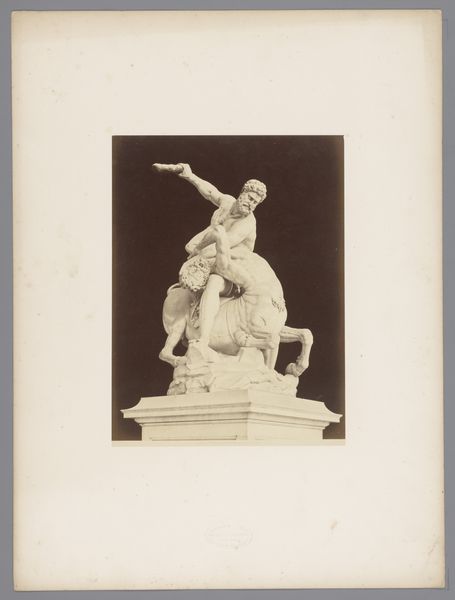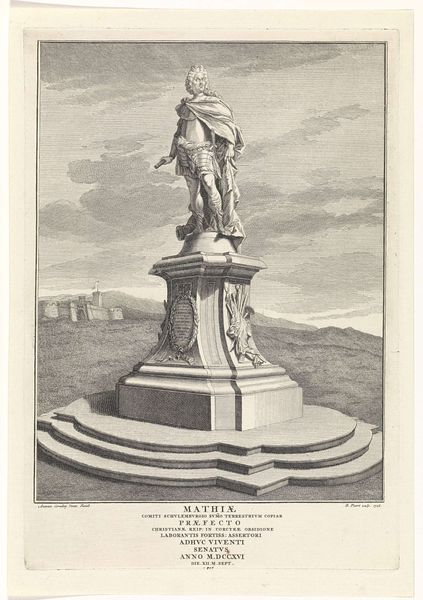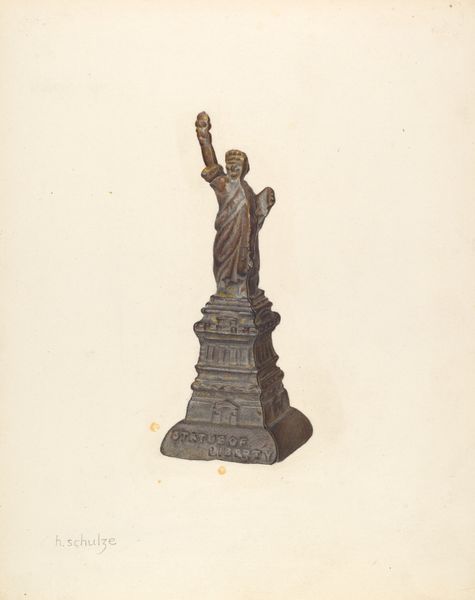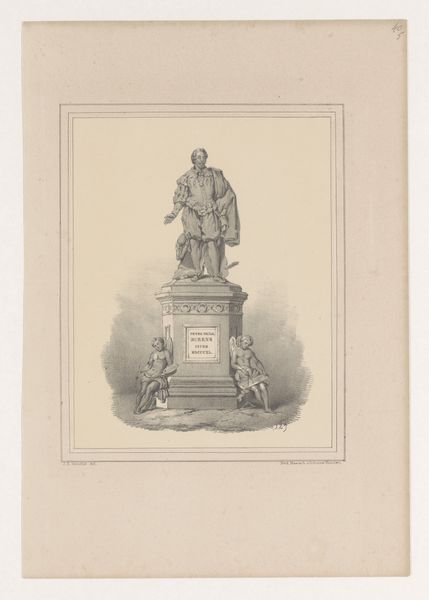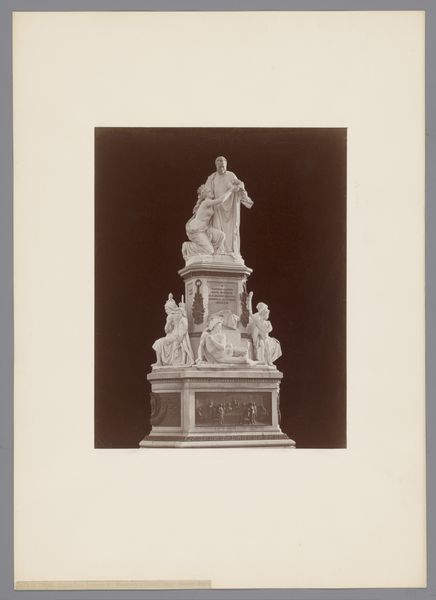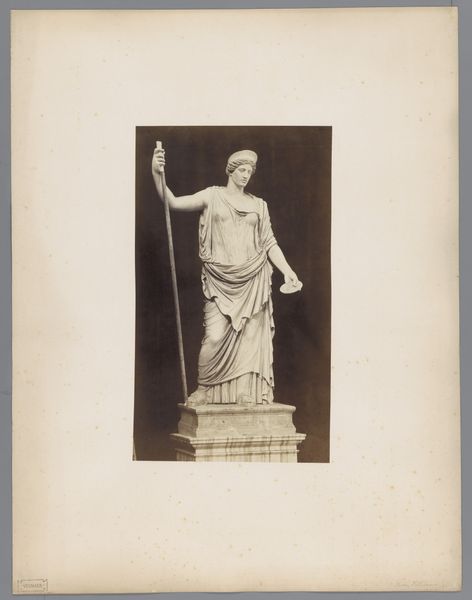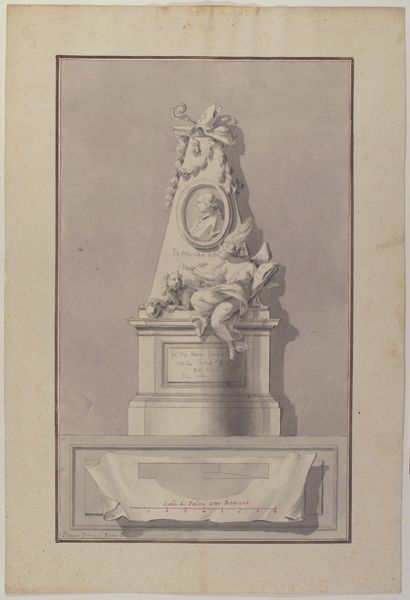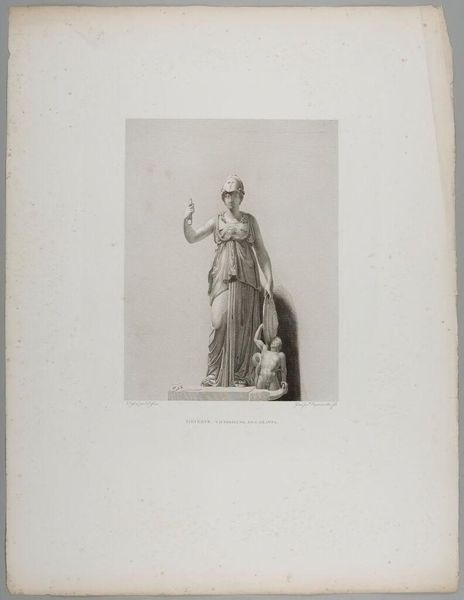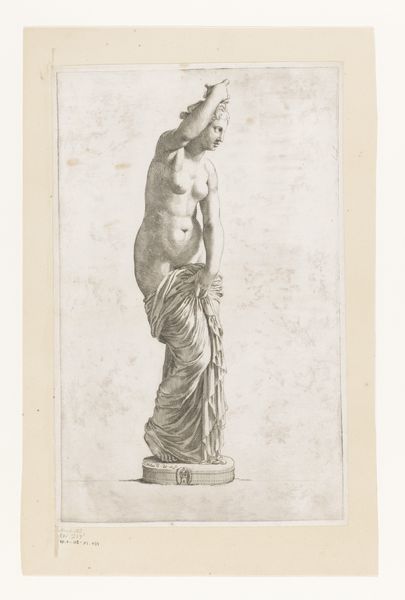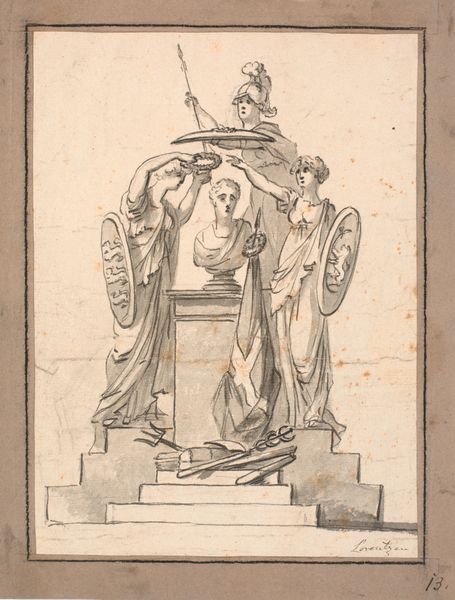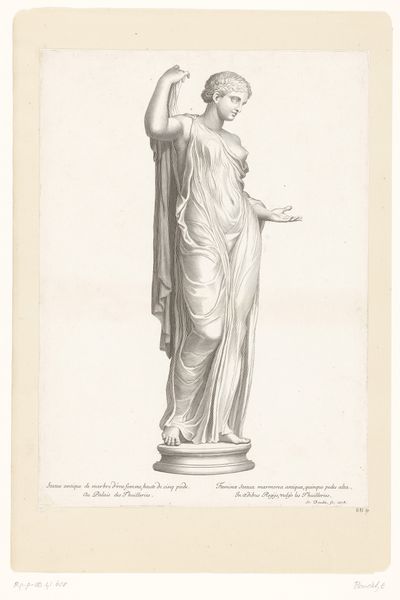
Dimensions: height 480 mm, width 345 mm
Copyright: Rijks Museum: Open Domain
Editor: This drawing by Johan Philip Koelman, from 1872, depicts the "Monument bevrijding van Den Briel," rendered in engraving. It looks so pristine. I am intrigued by this neoclassical style; the statue of a woman as a symbol of liberation stands on this huge pedestal and commands the eye. How do you interpret the image Curator? Curator: What I see is a visual representation steeped in the politics of its time. The female figure is a trope, right? An idealized symbol of 'liberation'. It would be fascinating to ask, liberation *for whom*? Who had access to freedom in the Netherlands in 1872, and who was still excluded or marginalized? Editor: So, you're saying we shouldn't just accept the surface-level meaning? Curator: Exactly! Let's consider what "liberation" really signified within the context of the 19th century. Was this freedom accessible to women, to people of color, to the working class? How does this monument perhaps participate in erasing those who remained unfree? Does this heroic depiction flatten or obscure the complexities of social change? Editor: I hadn't thought of it that way. It's like, who gets to be the face of liberation? Curator: Precisely! And whose stories get told, and whose are ignored, in the grand narratives of history. The artist undeniably draws on the conventions of neoclassicism to create a visual statement with symbolic heft. Editor: It makes you wonder about the unseen narratives connected to the statue. Thank you! Curator: Absolutely, and I think questioning visual narratives about liberation is something we should all reflect on.
Comments
No comments
Be the first to comment and join the conversation on the ultimate creative platform.

